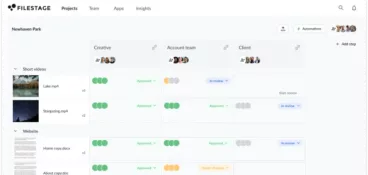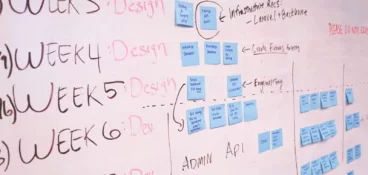Project managers are typically expected to create a ton of documentation for each project. The documents outline the project schedule strategy, processes, and resources used during the project. Creating all these documents can often be challenging and time-consuming. That’s where project management templates come in.
Project management templates help you stay organized and save time. They provide a ready-made and efficient solution, eliminating the need for repetitive and tedious work, as you don’t have to recreate these documents from scratch every time. In this article, we will discuss what a project management template is, the different types of free project management templates available and how to create one yourself.
See all your project’s feedback in one place
Bring files, versions, feedback, and approvals together with Filestage.
What are project management templates?
Simply put, a project management template is a ready-made document, specifically designed to create a standard format for the documentation created during the course of project. These templates help project managers and their collaborative teams improve efficiency, accelerate and standardize the project management process.
Now, because there are many aspects to every project, not to mention that every project will have its own unique set of requirements, there are usually a lot of documents created, from the inception of the project to its completion. Fortunately, there are templates for just about any type of documentation, at any stage in the project lifecycle.
However, not every free project management template is going to meet your needs as a project manager, and with the dozens of free templates available online, it can be difficult finding one that best suits your needs.
To help you out, we have curated the best project management templates and shared them below.
Learn more about other factors that can help you set up you creative process in the video:
What templates do you need for project management?
Creating documents from scratch for every new project is very inefficient. That’s why every project manager should have a repository of free project management templates.
Here’s everything you’ll need to successfully complete your projects:
- Project proposal
- Business case
- Project charter
- Project plan
- Project work schedule
- Work breakdown structure
- Project timeline
- Communication plan
- Risk register
- Risk management plan
- Project budget
Project proposal
Often, your project requires approval or sponsorship, financial or otherwise, from stakeholders. To adequately inform key participants about your prospective project, and supply them with all the information necessary to make an intelligent decision regarding approval, you’ll need a project proposal.
A project management proposal establishes the parameters of a project and the main goal of this document is to receive approval from the decision-maker anchoring the project. It usually comes in a document or PDF format, with a table of contents listing all sections included.
Proposals can be as short as one to two pages or as long as hundreds of pages.
1. Project management proposal example template by Slidebean
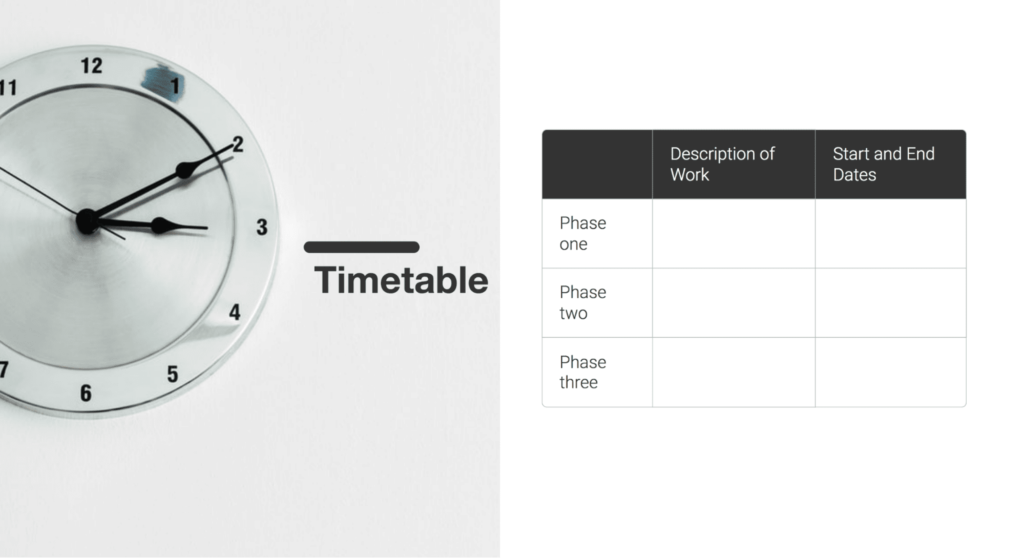
With Slidebean’s free project template, project leaders can easily create project proposal documents that will help them get quick approval from stakeholders or clients on any project. This template is simple, yet well detailed, for easy comprehension.
2. Project proposal template by Smartsheet
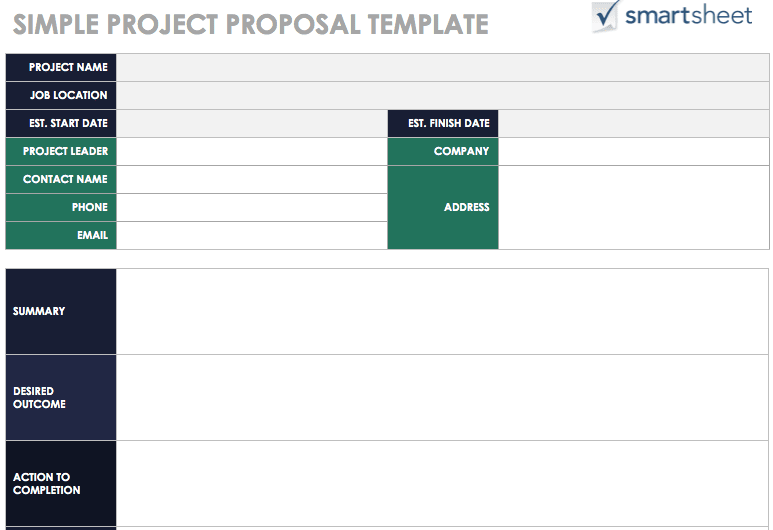
This free template from Smartsheet provides an organized layout, with an easy to use and read format. It can be downloaded, edited and shared in Google Docs, Excel and Word.
Business case
A business case is crucial for getting a proposed project into the hands of decision-makers. When choices are made, they should always be in the best interest of the business, given finite resources. Your argument for why your project is in the best interest of your business resides in the soundness of your business case.
A typical business case for any project should include details such as the reason for the project, the options considered and rejected, an analysis of the project cost vs. measurable benefits, key milestones in the project schedules, risks, and resourcing requirements.
These two useful templates will help you present your business case in the best possible light.
3. Business case template by Filestage
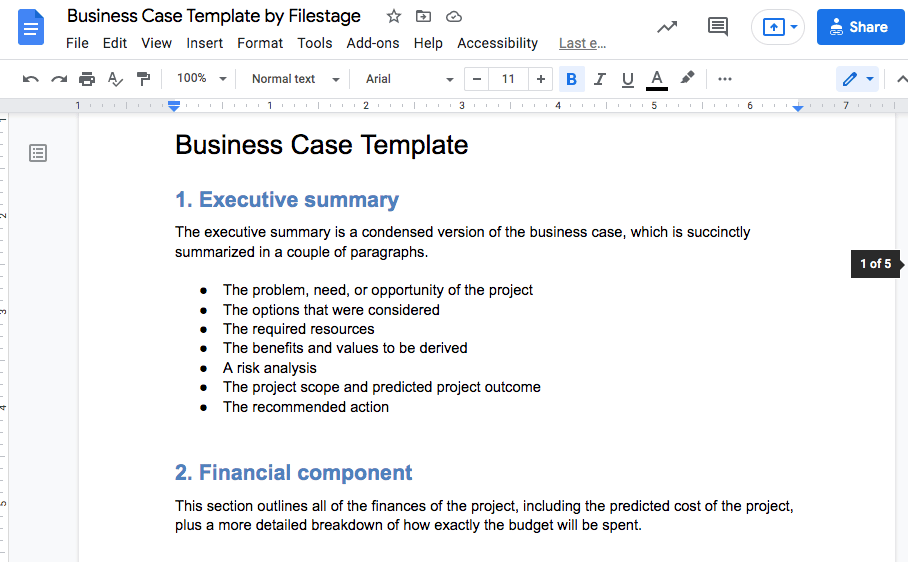
A business case is one of the most crucial elements of any set of project management documentation. This business case template from Filestage helps you write a compelling business case that will convince the leadership that your organization should allocate time, money, and resources to your project.
4. Business case template by Template.net
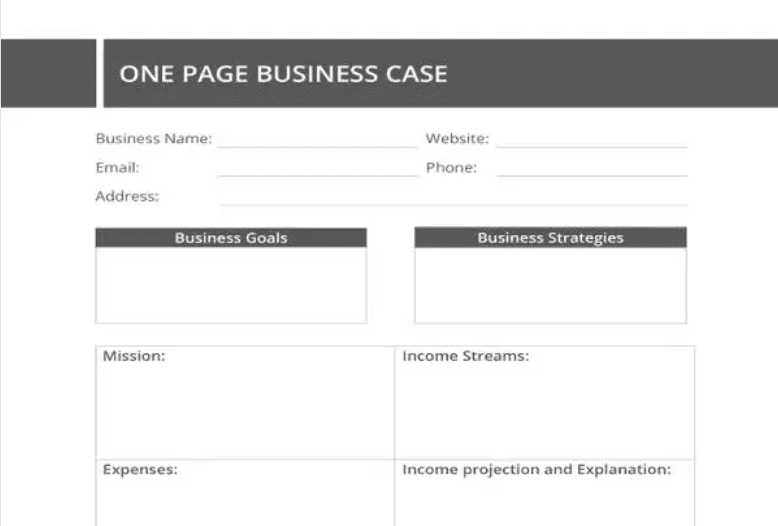
If you need a brief and simple template for your business case, then this one-page template will meet your needs. This template provides a solid foundation for project leaders looking to develop a project/organization-specific business case.
Project charter
The foundation of all project management documentation lies in the project charter. This document clearly defines the purpose and objectives of the project, the project’s scope, the roles and responsibilities of all stakeholders, and other vital elements.
A well-established and comprehensive project charter ensures that no high-level questions are left unanswered.
Here are the two project management templates helping you build a comprehensive project charter.
5. Project charter template by Filestage
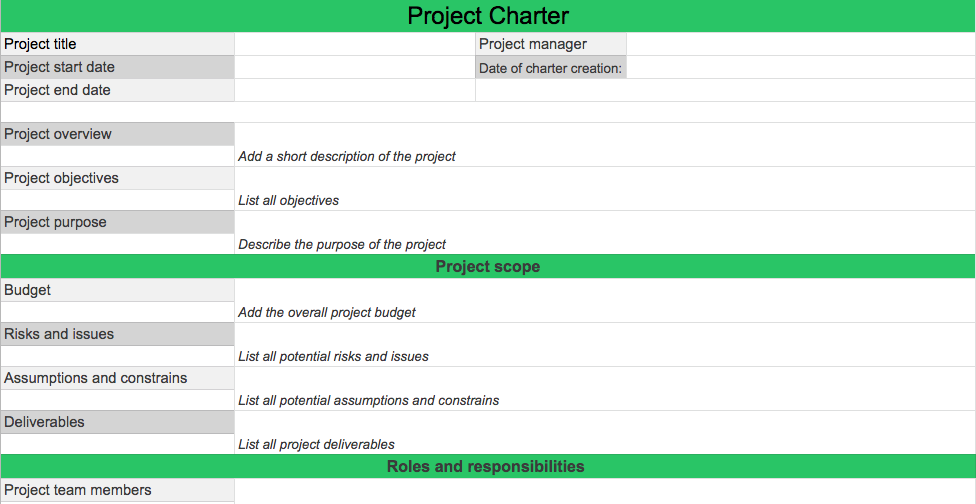
This free project charter template from Filestage keeps all the essential information in one simply stated spreadsheet. This project management template includes sections for the project overview, objectives and purpose. Also, the project scope section covers the budget, risks, assumptions and deliverables. You can also list all project team members and stakeholders, with their roles and responsibilities.
6. Project charter template by Project Management Docs
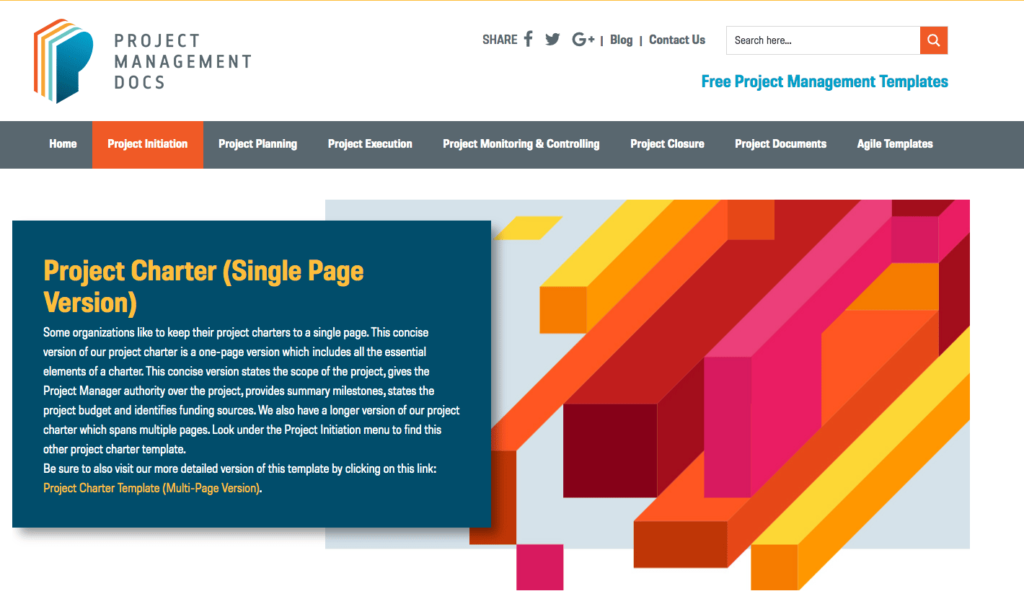
If you need an aesthetically appealing and elaborate project charter template, then this template, provided by the Project Management Docs, will make an excellent choice. The template is available in two versions – the short version to keep things precise and the longer one for more flexibility.
Project plan
A project plan is related to a project charter, but includes a lot more detail. Where project charters stop, project plans begin. A well-thought-out project plan takes all the conceptual details of the project into consideration, before any actual execution begins.
Project planning is your tool for thinking the project through from start to finish and here are the two project management templates that can assist you along the way.
7. Project plan template by Filestage
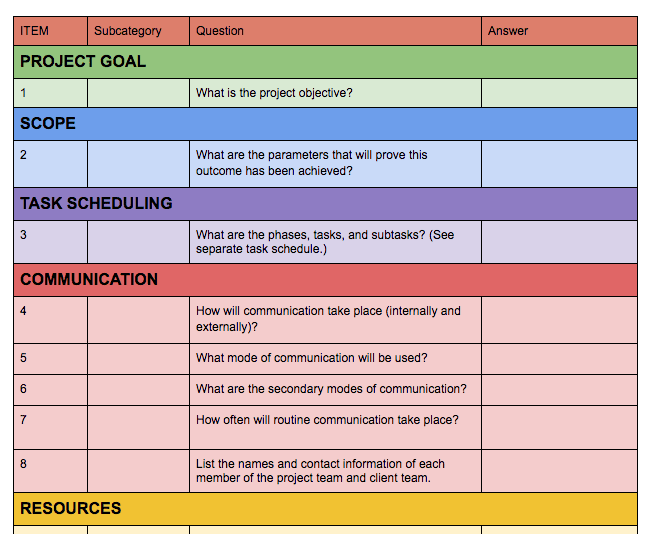
Filestage’s project plan template uses multiple colors to denote the different key sections necessary for an effective project plan. Fields are populated by responses to key questions, intended to drive towards the essential components of each category. For example, the primary question for the task scheduling section is: “What are the phases, project tasks, and subtasks?”
8. Project plan template by Project Manager
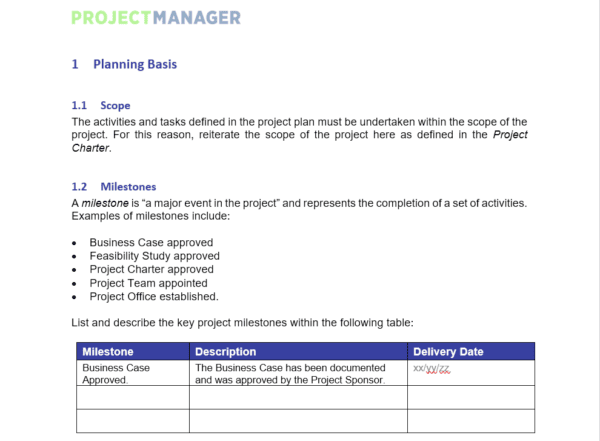
This project plan template enables a project manager to map out and track tasks and responsibilities and break them down into smaller and more easy-to-manage components. This makes it easier to monitor the project progress and assign the tasks needed to successfully complete the project on time.
Supercharge your content reviews
Share, review, and approve all your content in one place with Filestage.
Project work schedule
A project work schedule is a part of several project management software platforms. Using a work schedule template allows you to plan the details of how and when team members will accomplish work on the project.
It enables you to visualize the flow of production, while taking accumulating labor costs into perspective, as well.
Here are the two project management templates to help you define project schedules.
9. Project work schedule template by WhenIWork
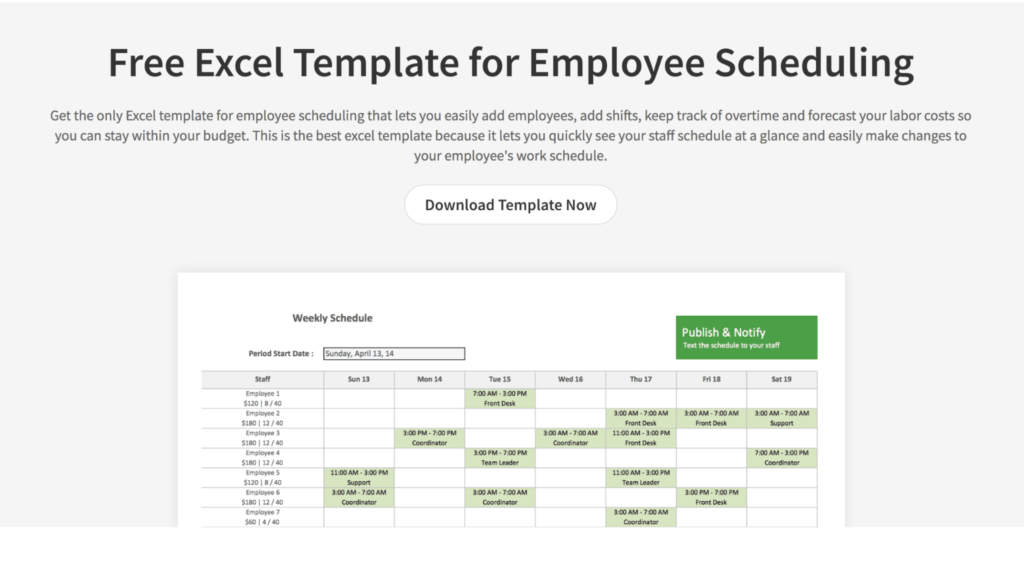
WhenIWork offers an Excel project schedule template to help project managers create work schedules for their teams. This project management template gives you an overview of your entire team’s schedule, so you can easily keep track of shifts and overtime, to ensure the team doesn’t exceed the budget.
10. Project schedule template by Project Manager

The Project Manager tool empowers project managers to efficiently manage their team’s workflow, with its easy to use and practical project schedule template. With this template, you are better equipped to organize your team’s work schedule and also keep track of the hours spent completing those tasks.
Work breakdown structure
Before you can define the intricacies of your team’s work schedule, you’ll need to develop the work breakdown structure. The structure is a process by which the overall project is divided into several project deliverables, further defined by tasks, subtasks, action items, and so on.
Here are the two templates helping you break your project down into a hierarchical list of tasks and subtasks for more efficient project management.
11. Template by Creately
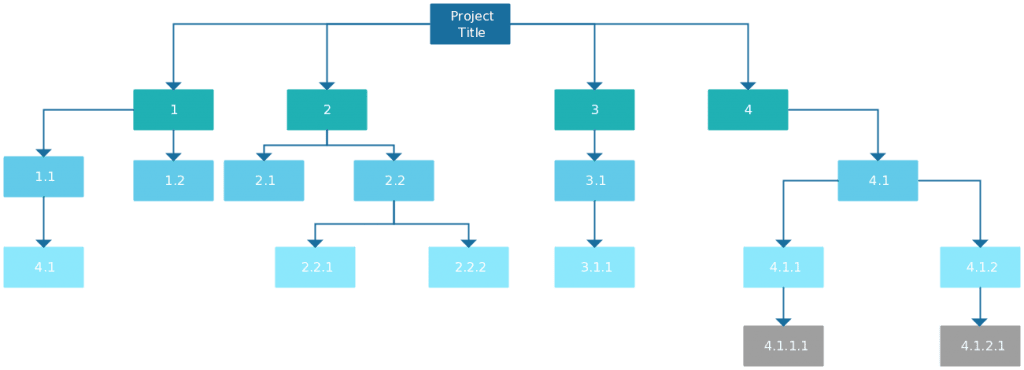
Creately’s template comes with a range of styling options and colors, so that the reader can easily understand the various sub-components of the projects and the elements belonging to a particular process.
12. Template by Template Lab
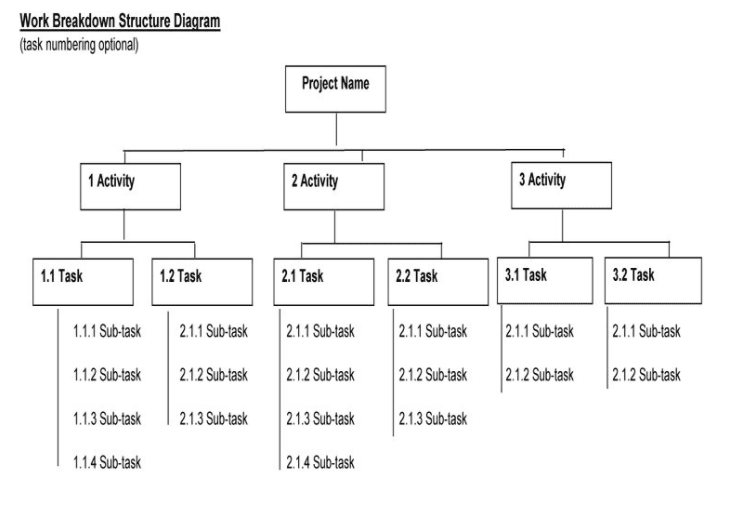
Although simplistic in design, this template by Template Lab is elaborate and covers the important elements required for this documentation. Thanks to its flexibility, this template can be used for both simple and complex projects.
Project timeline
A project timeline that defines tasks and milestones makes it easier and more efficient to manage a project. By drawing out a timeline, a manager is translating the project into a coordinated set of tasks, with clearly defined timeframes and deadlines, typically in chronological order.
This project checklist template also helps the project team see what needs to be accomplished for the next batch of deliverables and when.
Here are the two templates helping you define the timeline for your projects.
13. Project timeline template by Office Timeline
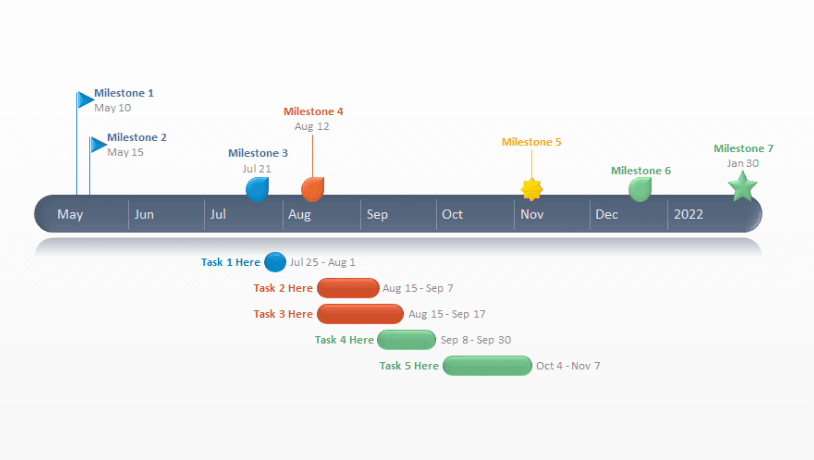
This is a free project plan template for PowerPoint, designed to help project teams visualize and assign tasks and deadlines, from inception to completion. This project management template is visually appealing and easy to understand, so your team won’t have a problem translating it.
14. Project timeline template by Venngage
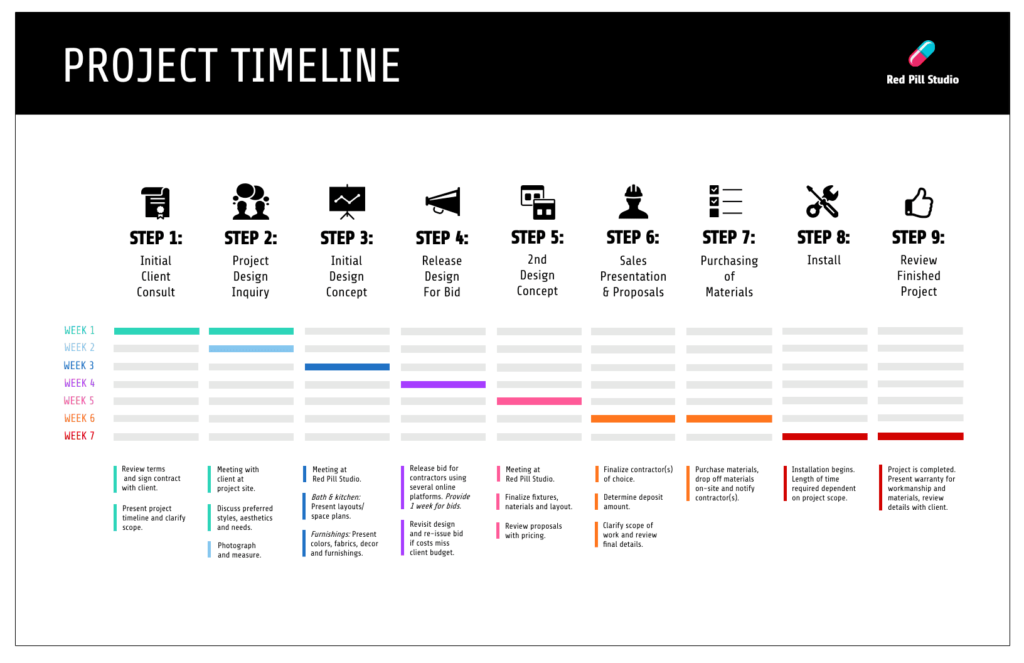
This is a simple and customizable project planning template by Venngage. This template makes it easy for project teams to streamline their project planning and accomplish deliverables within the key deadlines.
Communication plan
One of the biggest obstacles to efficient project planning is poor communication. Having a clearly defined communication plan in place assures there are clear guidelines and expectations regarding how, when, and with whom team members should communicate, depending on the task or need.
Here are the two templates that will help you build a collaborative plan for smooth communication.
15. Communication plan template by Creately
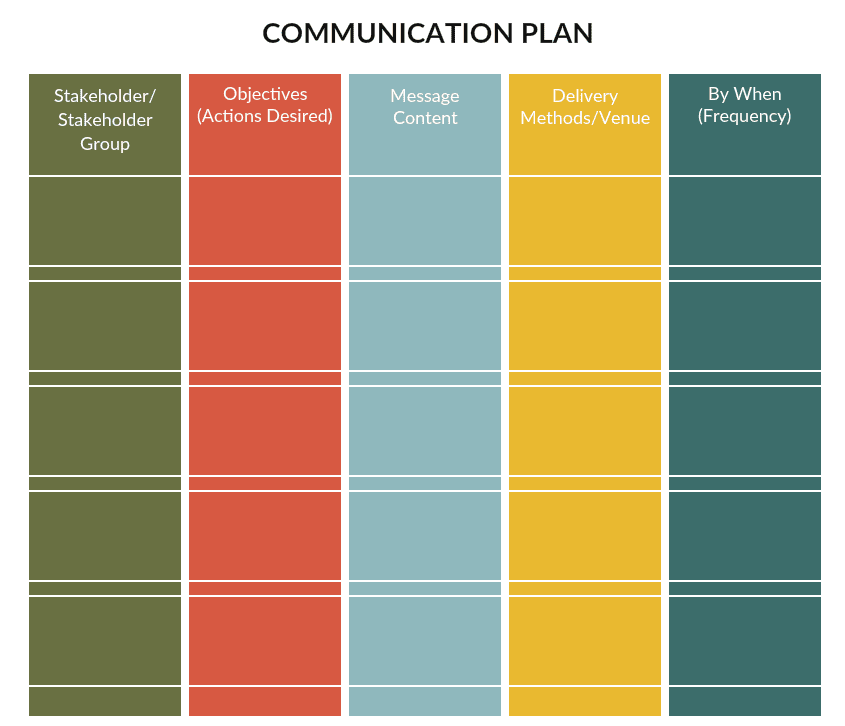
This simple project plan template by Creately is a great way to keep your team in check and set the basis for your action plan. This project management template provides a simple layout to help clarify messages and deliver information to the project stakeholders.
16. Communication plan template by HubSpot
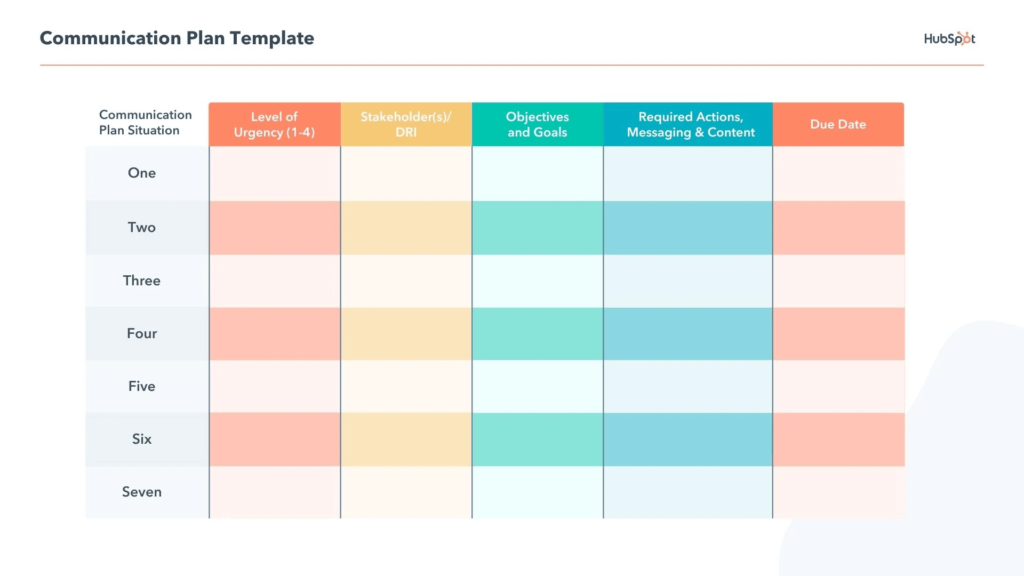
Project managers can make use of HubSpot’s communication plan template to create documentation that will lay the foundation for your operations and frame communications with clear goals and methods.
Risk register
A risk register or “risk log” is a chart, documenting all identified risks and their probability, impact, and effect throughout the project. An effective risk management plan is built upon the items listed in a risk register. Without a risk register, the chances of unexpected events with no planned response increase considerably.
Here are the two templates helping you address all potential risks in your project.
17. Risk register template by Project Manager
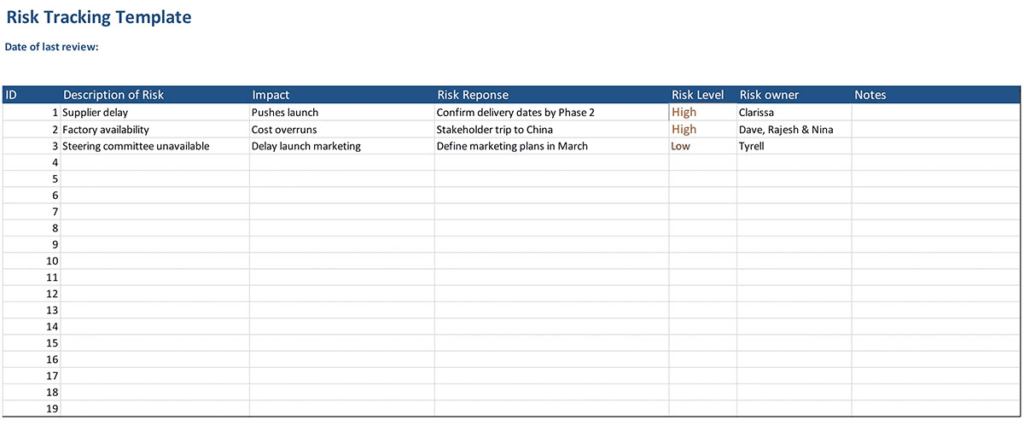
This risk register template by Project Manager offers an easy to use template, designed to identify risks early on, so the team can be better prepared to mitigate the impact of the risk, or avoid them altogether.
18. Risk register template by Smartsheet

Smartsheet offers a very detailed risk register template. With this project template, you can assess risks, calculate the priority of the identified risks based on probability and potential impact, make notes on mitigation strategies, and assign a team member to monitor the risk.
Risk management plan
While surprises are bound to come up over the course of a project, managers can do what they can to anticipate potential problems via a risk management plan. A risk management plan identifies all foreseeable risks and analyzes the potential impacts of those risks.
Based on these project risks and their impact, managers will determine and record the planned course of action to mitigate these unexpected events as much as possible.
Here are the two templates helping you minimize all possible project risks in a scope of a project.
19. Risk management plan template by Meliora Partners
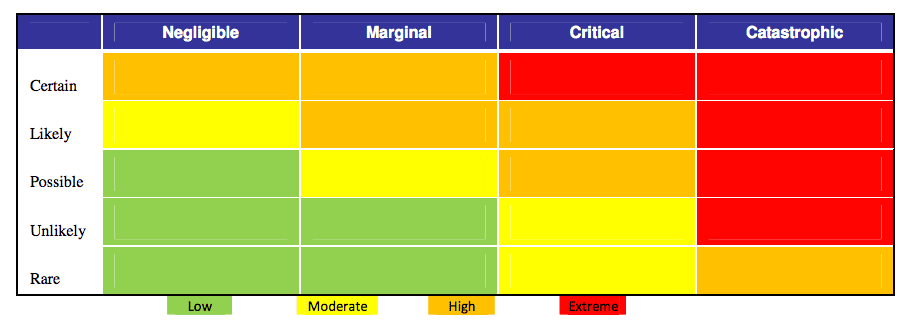
Meliora Partners is a long and well-detailed risk management project template. Due to how thorough it is, this template is best suited for project managers who manage more complex projects.
20. Risk management plan template by Stakeholder Map
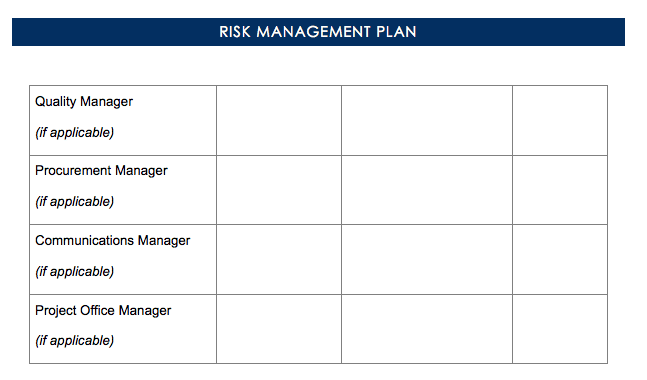
Stakeholder Map’s risk management template is a great resource for project leaders. It comes with a bevy of features, hints, and tips. Embedded in the template are examples of a risk assessment method, risk report form, a model risk management process, and a risk management method.
Project budget
Going over budget is one of the biggest threats to successful project management. Without a clear idea of how much each project stage should cost, your estimates and, more importantly, stakeholder expectations, may be wildly inaccurate.
Project budgeting includes detailed estimates of cost for every aspect of the project, from start to finish. It may be broken out by phase or task, but should consist of labor costs, operating costs, overhead costs, and material costs.
These two useful project planning templates to help you plan the budget for your next project.
21. Project budget template by Corporate Finance Institute

If you need a tool that will make it easy for you to summarize the budget for a project, then this template by Corporate Finance Institute is just right. This free template covers elements such as material cost, total labor cost, estimated and actual labor time, etc.
22. Project budget template by Project Manager

This budget template by Project Manager can be used for a wide variety of projects. It is specifically designed to estimate the cost of managing the project, track expenses, proactively plan for contingencies, and more. This template also comes with a color-coding feature, to let you know when you’re exceeding your budget.change request template, then this one-page template by Team Gantt would be an excellent choice. While the layout is straight to the point, it is still quite detailed and gets the job done. Like other templates here, this one is editable and it is available in Google Docs.
Creating your own project templates
Although there are so many available free templates, you might still have to create your own template to help you effectively manage projects according to your needs. If that’s the case, don’t sweat. Microsoft Office is a great resource for people looking to create their own project templates.
For example, you can create a project plan template in Excel and easily customize it with colors and visual hierarchy, to highlight key information and communicate the project status at a glance.
Creating a project template in Word is easy, as well. Word also has built-in templates you can use and tools to help you customize your own templates, to suit your needs. Whether you’re working on a specific project that requires agile project management, or you need to manage multiple projects, Word can be your go to tool for building a template.
Fast-track your creative projects with the right templates
Whether you’re a small start-up, a large company trying to organize your operations, or a growing company in need of robust project management solutions, taking advantage of some, if not multiple, project management templates can streamline your operations, open up communication, and increase your project’s efficiency and probability of success.
Think about what project management components are most important to your team. It may be that all template formats, including everything from the business case, to the project status report template are what you need to help your project thrive. Whatever you choose, use it fully to maximize your advantage.




